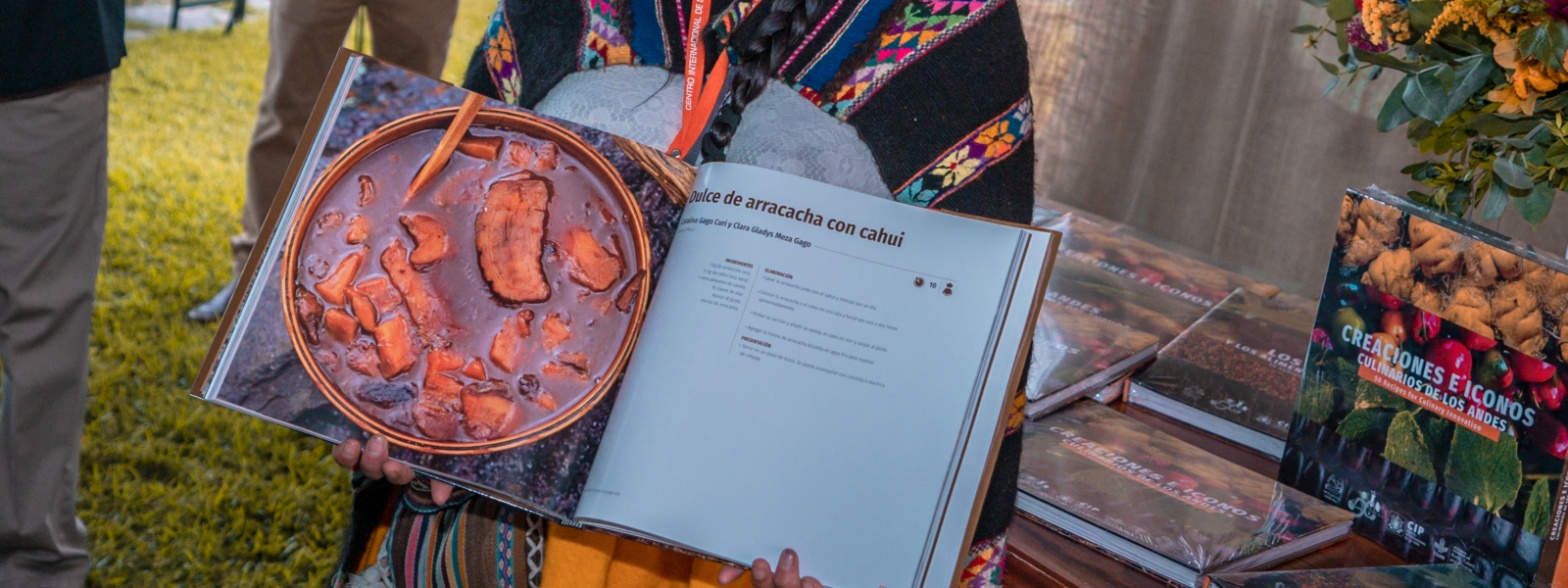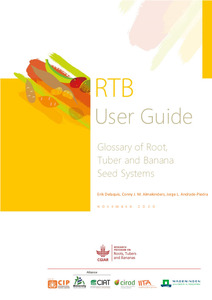Anniversaries are occasions to commemorate the past while looking to the future, to mark the evolution of “who we are” to “who we will be.” The International Potato Center (CIP) recently celebrated a significant milestone – the 50th anniversary of its founding. In an event entitled Agrobiodiversity for people, the planet and prosperity friends of CIP gathered virtually worldwide to focus on CIP’s relationship with Peru, the Andes and the region’s important role to play in food systems transitions building on its unique agrobiodiversity.
The event featured speakers from CIP, CGIAR and selected local partners who focused on the importance of agrobiodiversity to ensure food and nutrition security, social inclusion in market systems and environmental protection for highland communities in the future. CIP also used the occasion to launch two new books which celebrate the contribution of agrobiodiversity to our diets. These unique books are the result of a collaboration between over 100 researchers, chefs and photographers from the Andean region and beyond.
In her welcoming statement, CIP’s Director General Barbara Wells stressed that genetic gains leading to improved root and tuber crops and agri-food systems were feasible thanks to agrobiodiversity. Highlighting the role of agrobiodiversity conservation, Wells noted that the CIP genebank shares more than 5,000 germplasm samples every year to help countries develop nutritious and climate-resilient potatoes. “Through collaborations and capacity building with national partners and the private sector, CIP has helped more than two million smallholder farmers improve their yields with our potato varieties,” Wells said.
Wells announced that in her new position as One CGIAR’s Global Director of Genetic Innovation, she will oversee six genetics-focused initiatives that combine market intelligence and breeding technologies to support farm and landscape solutions. “We need to recognize that farming no longer happens only in fields,” Wells said. “Modern breeding is a high-tech knowledge business that accelerates breeding with greater accuracy, helping farmers keep pace with climate change. Increased adoption rates mean improved climate change resilience for farmers and improved food and nutrition security for everyone.”
CGIAR Board Chair Marco Ferroni congratulated CIP on reaching its milestone and drew attention to its “game changing” impact on food and nutrition security. “Much of this impact can be attributed to CIP’s leadership in germplasm conservation, characterization and use,” Ferroni said. “CIP’s successful stewardship of agrobiodiversity fits perfectly with One CGIAR’s initiatives that aim to transform food, land and water systems in a climate crisis.”
Joaquin Lozano, One CGIAR’s newly appointed Regional Director for Latin America and Caribbean, stated that CIP’s half century of work in Latin America will help pave the way for work in the next 50 years. “The evolving public-private collaborations and increasing commitment to strategic innovation with the private sector and international finance institutions will enable us now as part of One CGIAR to find solutions to agriculture and sustainability challenges with broader reach and greater impact,” Lozano said.
The highlight of the event was the launch a new book combo entitled 50 Andean Future Foods and 50 Recipes for Culinary Innovation, which was funded in part by the CGIAR Research Program on Roots, Tubers and Bananas (RTB). The books help expand the visibility and knowledge of Andean crops. “These books highlight the cultural, social, nutraceutical and economic significance of these crops for farmers in the region, contributing to their resilience,” said Graham Thiele, RTB Director in the book’s prologue.

Graham Thiele with Albéric Hibon and Clara Gladys Meza Gago. Photo credit S. De Haan/CIP
The books take the reader on a journey through different mountain foodscapes from Argentina to Venezuela and celebrates the rich culinary heritage of the Andes. The recipes, chefs, photographers, and scientists offer a tribute to the people who conserve the biodiversity of Andean crops. “This publication aims to reimagine Andean crops from an artistic, scientific, and social perspective, making it possible for agrobiodiversity to contribute to food system sustainability and allowing thousands of people to discover this unique heritage,” Thiele said.
Ginya Truitt-Nakata, CIP’s Regional Director for Latin America and the Caribbean, said the new book graphically displays how the agrobiodiversity of the Andes represents a rainbow of full color. “The Andes account for more than 80 domesticated crops, which together represent more than 10,000 distinct varieties, as well as hundreds of species of crop wild relatives, which have importance for our food future. The rainbow of color in today’s crop varieties didn’t come about by accident.” According to Truitt-Nakata, Andean farmers consciously selected varieties due to their color, as the colors often represent different nutrients. “This agrobiodiversity is a living jewel that not only nourishes our bodies but also our souls.”

Ginya Truitt Nakata with some of the chefs who contributed to the books. Photo credit S. De Haan/CIP
Clara Meza Gago, coordinator of the community management committee of the Nor-Yauyos Cochas Landscape Reserve, which comprises natural areas and farming communities in Peru’s Central Andes, told the audience that the publication of the books was a “a dream come true.” “Thanks to CIP and the launch of this book, our communities are rising out of anonymity, and we are very proud to be able to offer our biodiversity and our ancestral knowledge,” Meza Gago said.
The audience was treated to a cooking demonstration to prepare picante de chocho using many of the “future foods” that can be found in the Andes, including potatoes, tarwi and chiles. Chef Karissa Becerra, who coordinates the gastronomy program at the Pontificia Universidad Católica del Perú, and Stef de Haan, a senior scientist at CIP, narrated the process explaining not only how to create the tasty dish but also the history and value of the foods included in the recipe.

Chefs Karissa Becerra and Stef de Haan inspire us all with a culinary conversation preparing delicious dish with tarwi (chocho). Photo credit G. Thiele/RTB
The seminar was moderated by Horacio Rodriguez, CIP’s Senior Manager Operations and Impact Scale for Latin America. Additional remarks were provided by Rodney Cooke, CIP Board Chair; Margaret Zeigler, Interim President of SoAR Foundation; and Jimena Sologuren, Social Responsibility Manager at the Companía Minera Poderosa. It also featured presentations by graphic designer Ricardo Morales and the well-known Peruvian photographer Walter Wust.
RTB is immensely proud to contribute to the production of the book and the RTB Director Graham Thiele provided a prologue that synthesized the role of Andean superfoods.



